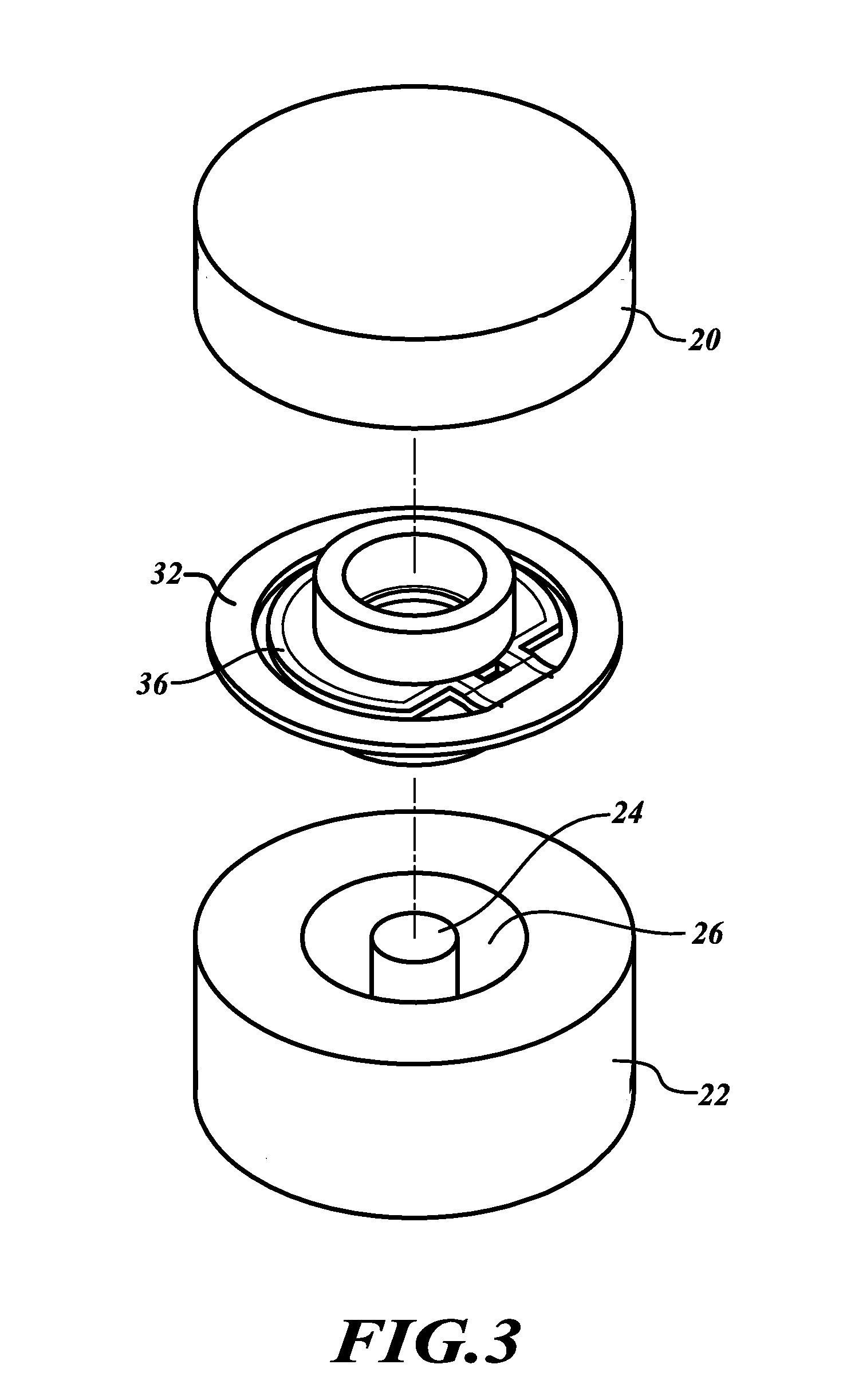Stress reduction components for sensors
a technology of stress reduction and components, applied in the direction of speed/acceleration/shock measurement, measurement devices, instruments, etc., can solve problems such as worsening of sensor errors, reduce stress on sensor components, reduce stress on sense elements, and increase accuracy over temperature
- Summary
- Abstract
- Description
- Claims
- Application Information
AI Technical Summary
Benefits of technology
Problems solved by technology
Method used
Image
Examples
Embodiment Construction
[0023]The present invention provides stress isolation / reduction features for avoiding plastic deformation, slip, or bending of a reed of an accelerometer (e.g., Q-Flex made by Honeywell, Inc.).
[0024]FIG. 3 illustrates a force rebalance accelerometer where the features of the present invention are used. This accelerometer includes an upper stator 20 and a lower stator 22. The inwardly facing surface of a least one stator includes a bore within which is positioned a permanent magnet capped by a pole piece, as illustrated by pole piece 24 within a bore 26. Also shown is reed assembly that is mounted between the upper and lower stators. The reed assembly includes a reed that includes an outer annular support ring 32 and a paddle 36 supported from the support ring by flexures. The reed is preferably fabricated from a single piece of fused silica. The support ring 32 includes three mounting locations. When the accelerometer is assembled, the mounting pads contact the upper and lower stato...
PUM
 Login to View More
Login to View More Abstract
Description
Claims
Application Information
 Login to View More
Login to View More - R&D
- Intellectual Property
- Life Sciences
- Materials
- Tech Scout
- Unparalleled Data Quality
- Higher Quality Content
- 60% Fewer Hallucinations
Browse by: Latest US Patents, China's latest patents, Technical Efficacy Thesaurus, Application Domain, Technology Topic, Popular Technical Reports.
© 2025 PatSnap. All rights reserved.Legal|Privacy policy|Modern Slavery Act Transparency Statement|Sitemap|About US| Contact US: help@patsnap.com



